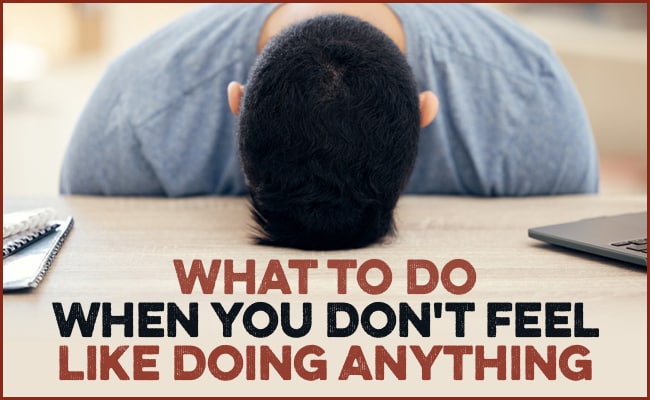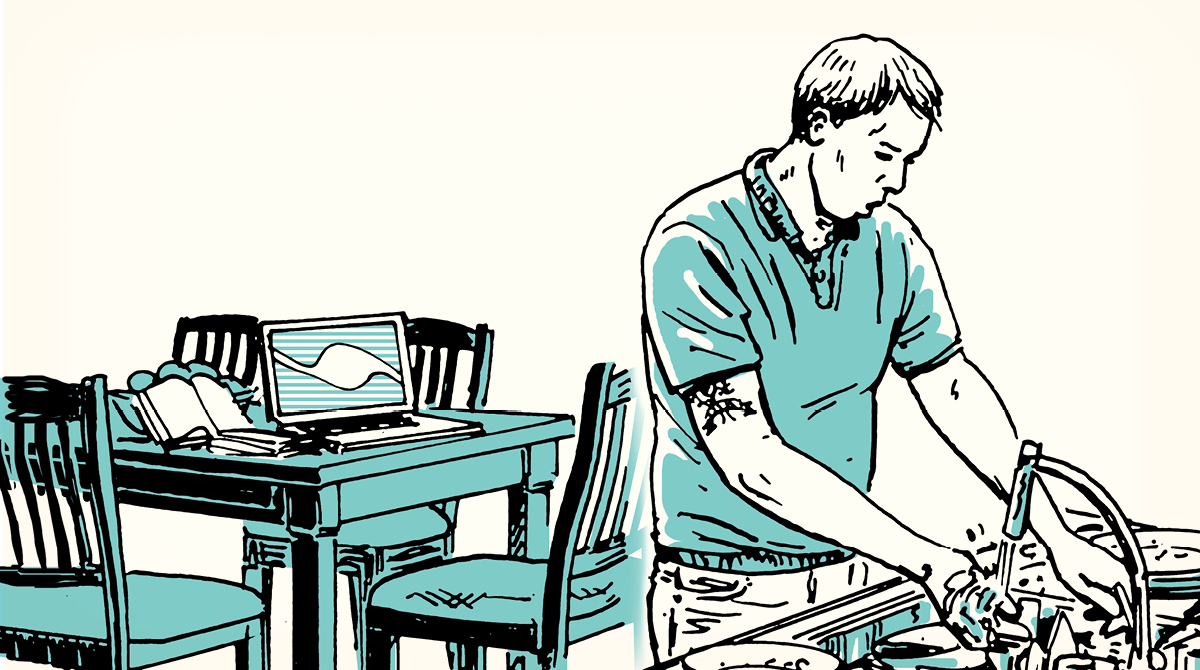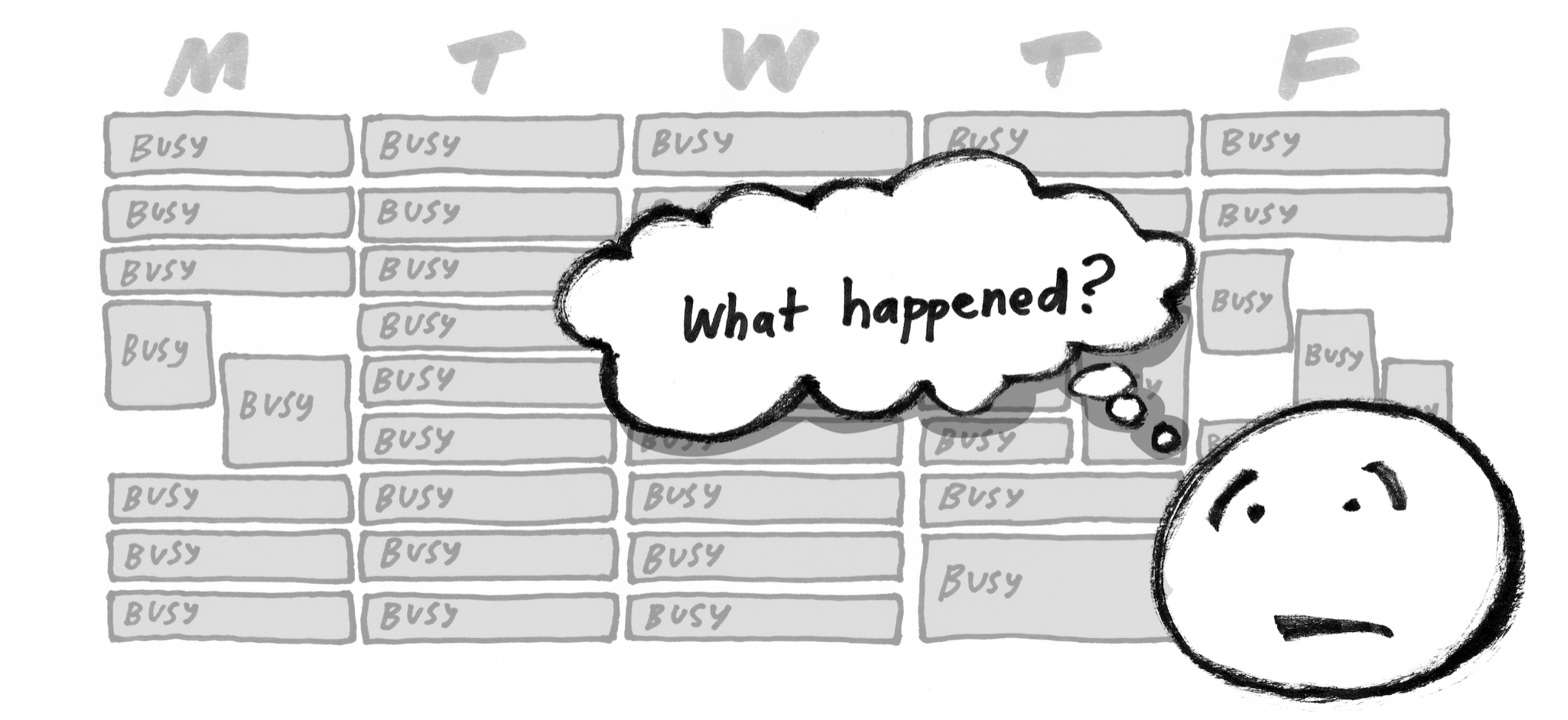
Every now and then I have days where I just don’t feel like doing a damn thing.
The idea of being productive makes my brain hurt. These little funks can be extremely frustrating, especially when there’s a lot I need to accomplish.
I haven’t quite figured out why I get hit with these bouts of “don’t-want-to-do-anything-itis.”
Maybe it’s burnout. Maybe it’s the vagaries of fluctuating mood. Maybe it’s the stars. It’s a mystery.
While it might be nice to lean into the feeling and take the day off, I typically don’t have that luxury.
So, over the years, I’ve developed a toolkit for myself to help me get through those days when I feel like doing nuthin’. There’s no single silver bullet in my bag of tricks. Some days, one tactic works; other days, it doesn’t. Sometimes I have to put together a cocktail of different approaches to get myself going.
Also, the goal on these days when I don’t feel like doing anything isn’t to heroically overcome my inertia and knock the day out of the park; rather, my expectations are much lower. I’ll take a metaphorical ground ball that dribbles into the outfield for a single. I’m just trying to keep the gears of life greased and moving while my motivational faculties come back online.
Go Through the Motions
“Going through the motions” gets a bad rap.
There’s this idea that if your actions aren’t imbued with passion and excitement, then you shouldn’t do them at all.
But based on my experience, going through the motions is completely fine on those days you don’t feel like doing anything.
Going through the motions keeps you consistent. Consistency in the long term is the key to success in life. Going through the motions when you don’t feel like doing the thing helps keep the habit in place. I’ll have days when I don’t feel like working out, but I go through the motions of working out anyway. My workout isn’t super awesome on these days. In fact, I’ll lower the weight and even shorten the workout. But I get the workout done. I keep up the identity of a dedicated exerciser.
In addition to maintaining and strengthening a habit, going through the motions might also catalyze a resurgence of motivation. We’ve talked about this idea before: Feelings often follow action. You might not initially feel like working on your taxes, but once you begin, you might start feeling more dialed in because you see yourself getting closer to being done with them.
Go for a Walk Outside
Solvitur ambulando. It is solved by walking.
Yes, just about anything can be solved by a walk. Even a lack of motivation to clean out the garage.
When you feel stuck, head out the door and take a stroll around the neighborhood. Physical activity can increase neurotransmitters like dopamine and norepinephrine, which play crucial roles in motivation.
Change Your Surroundings
Sometimes, a change of scenery is all it takes to reignite your motivation. This could be as simple as moving to a different room in your house or finding a new workspace altogether. On days when I don’t feel like doing anything, I’ll sometimes take my laptop to a coffee shop or the public library. Something about the change in environment scrapes off the barnacles of psychic lethargy and helps me get working again.
Leverage Positive Peer Pressure
Humans are inherently social creatures, and we can use this to our advantage when motivation wanes. Setting up accountability partnerships or joining group challenges can provide external motivation when internal drive is lacking. Just working around other people who are working can be motivating. I think this may be one reason why I find working in a public library helpful: I’m around other people who are working.
I’ve also seen students who will join a virtual study group — a Zoom call — with strangers. Just the feeling that there are other eyes on them (whether or not other people on the call are really paying attention to them) helps them get to work and stay focused.
Journal and Goal Review
I gave up on daily journaling several years ago. But I still journal whenever I think it would be helpful. Days when I don’t feel like doing anything are one of those times.
When I journal on days I don’t feel like doing anything, I avoid using my journal as a toilet in which to vomit my ennui. That just feeds a cycle of rumination that makes the angst feel worse. Instead, I use my journal to help constructively work through my lack of motivation. We unpack how to do this in our article “The Right and Wrong Way to Journal.”
I’ll often use these journal sessions to review my big picture goals in life. Taking a wider-lens perspective sometimes helps me slough off my inertia.
Practice Productive Procrastination
One thing I’ve learned is that when I have days when I don’t feel like doing anything, “anything” usually means the things I planned to do — the big tasks at the top of my to-do list. But if something’s not on my prioritized agenda, then for some reason, I’m game for it.
So when I have those days I don’t feel like doing “anything,” I put those bigger tasks on hold and see if there’s smaller stuff further down my to-do list that I’m in the mood for tackling instead.
I practice “productive procrastination.”
Maybe I don’t want to write an article; so I clean out my bookshelves instead.
Maybe I don’t want to do my taxes; so I prepare some package returns instead.
Productive procrastination does two things:
First, taking action, even on trivial tasks, can get the flywheel of motivation going. Cleaning out your bookshelves can provide a sense of progress, potentially boosting motivation for bigger tasks.
Second, even if it doesn’t goose your motivation for bigger things, it still allows you to get some stuff done. Maybe not the most important stuff, but stuff nonetheless. It’s stuff that needs to get done anyway and has practical and mental-load-lightening benefits.
So on those days where you don’t feel game for working on the things you had intended to tackle, rather than declaring the day a wash, just content yourself with knocking out some lower-hanging fruit. You’ll get the sense of satisfaction that comes from completing any task and set yourself up for better-organized, better-focused days to come.
I’m a big believer in using the power of motivation as the driver to success. But motivation isn’t a constant state – it naturally ebbs and flows. When motivation wanes, it pays to have a repertoire of strategies you can draw upon to recapture its energy and get yourself back in gear. Try some of the tactics above and experiment with your own to find what works for you.







